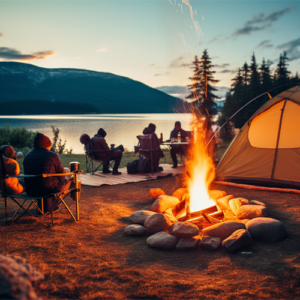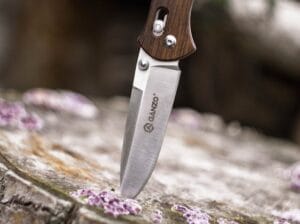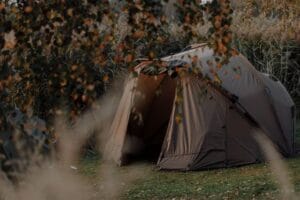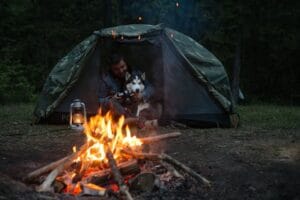What Makes a Bushcraft Backpack “Best”?
When you’re out in the wild, your backpack isn’t just a bag – it’s your lifeline. So, what separates a solid bushcraft backpack from something that’ll fail halfway through a trip?
It’s not about having extra bells and whistles. It’s about durability, comfort, and smart design.
If you’re hiking, camping, or just spending long days out in the wild, you need a backpack that can take a beating, carry your gear, and not feel like you’re hauling bricks.
Durability: Can It Handle the Beating?
The wild doesn’t care about how sleek or fancy your pack looks. It’s going to get scraped against rocks, soaked by rain, and dragged through mud.
The last thing you need is a torn strap or a hole in the base when you’re miles from civilization. Durability should be your number one priority. Look for rugged materials like Cordura or other heavy-duty fabrics.
These hold up against rough conditions and don’t give in easily. Pay attention to stitching, especially on load-bearing points like straps and zippers.
Double stitching or bar tacks at stress points means less chance of failure.
Another thing that often gets overlooked is the frame. Whether it’s internal or external, it needs to be strong enough to support the load without adding unnecessary weight. Metal frames last longer, but there are some sturdy plastic frames that do the job, too.
Make sure it doesn’t feel flimsy. A weak frame will leave you carrying dead weight when it fails.
Comfort for Long Hauls: Don’t Wreck Your Back
Durability doesn’t matter if your backpack becomes a torture device after a few hours. A bushcraft backpack should spread the load evenly across your body. That means padded shoulder straps, a decent hip belt, and a well-ventilated back panel.
A pack without these will have you cursing every step. The hip belt, in particular, is critical because it transfers the weight off your shoulders and onto your hips, where you’re stronger. If the belt’s too flimsy or doesn’t sit right, you’ll feel it in your lower back and legs pretty quickly.
Adjustability is another huge factor. You want a pack that fits your body, not some one-size-fits-all solution. Make sure the straps and belt are adjustable, and if possible, look for packs that let you adjust the torso length.
Everyone’s built differently, so this matters more than most people think.
Breathability is another small but important comfort factor. A sweaty back isn’t just uncomfortable; it can cause chafing and hot spots. Look for packs with some sort of ventilation system or mesh back panel that keeps airflow between you and the pack.
Storage Space and Features You Actually Need
This is where a lot of packs go overboard. You don’t need 20 different pockets and hidden compartments. You need smart storage that helps you carry what’s necessary and access it quickly.
A large main compartment is a must – that’s where you’ll keep most of your gear. It should be easy to open and close without wrestling with zippers or buckles.
Side and front pockets are handy, but again, too many is overkill. You want just enough for quick-access items like a water bottle, fire kit, or knife.
If you’re digging through layers of small pockets to find something, it’s a problem. Stick with a layout that’s simple but effective.
A good bushcraft backpack should also have solid attachment points. Molle webbing or gear loops let you attach extra tools or pouches on the outside of your pack.
This is great for bulky items like an axe or tarp that might not fit inside. But don’t overload it – too much gear hanging off the outside of your pack can throw off your balance or get snagged on branches.
A hydration sleeve or pocket is a nice-to-have, especially for longer hikes. Being able to stay hydrated without stopping to pull out a water bottle saves time and effort.
Some packs include a rain cover, but if it doesn’t, make sure you either have a waterproof pack or bring a separate cover.
Top Picks for the Best Bushcraft Backpacks
Now that we’ve covered the basics, let’s get to some packs that actually perform.
Karrimor SF Sabre 45
One of the best out there is the Karrimor SF Sabre 45. It’s bombproof, built from 1000D Cordura, and has plenty of storage without overloading you with pointless extras.
The 45L capacity is enough for multi-day trips but still manageable for day hikes. Plus, it’s got a detachable yoke system that makes it comfortable to carry even when fully loaded.
Pros:
- Durability: Built from 1000D Cordura, this pack is designed to take a beating in tough environments. It’s about as rugged as they come.
- Capacity: 45L is a perfect size for bushcraft. It holds enough for multi-day trips without being overly bulky.
- Comfortable Carry: The detachable yoke system gives great support, making it comfortable even with heavy loads.
- Modular Design: The molle webbing and side pouches make it easy to customize and expand if you need more space.
Cons:
- Weight: The Sabre 45 is on the heavier side due to its rugged build. It’s not ideal if you’re counting ounces.
- Price: It’s a bit expensive compared to other packs, especially for a mid-sized option. You’re paying for durability, but still, it’s not a budget option.
- Basic Internal Organization: The lack of internal pockets might be an issue if you like everything compartmentalized inside the main compartment.
Helikon-Tex Matilda
If you’re looking for something more budget-friendly but still reliable, check out the Helikon-Tex Matilda.
This pack is smaller, at 35L, but it punches above its weight. It’s simple but well thought out, with three outer pockets and plenty of molle webbing for attaching extra gear.
The materials aren’t as heavy-duty as some higher-end options, but it’s durable enough for most trips and very comfortable to wear.
Pros:
- Affordable: It’s one of the best value-for-money packs out there, offering solid performance without the hefty price tag.
- Compact: At 35L, it’s a great size for day trips or light overnight camping. It keeps your gear organized without feeling oversized.
- Comfortable Straps: Even for its lower price, the shoulder straps and back padding are surprisingly good, keeping you comfortable over long distances.
- Molle Webbing: Plenty of attachment points for adding pouches or gear, making it easy to expand its capacity.
Cons:
- Material Durability: It’s not as tough as high-end packs like the Karrimor SF, so you might notice wear and tear sooner if you use it heavily.
- Smaller Capacity: The 35L size might be limiting if you’re looking to carry more gear for longer trips.
- Zippers: Some users report that the zippers aren’t as smooth or durable as they’d like, especially under heavy loads.
Mystery Ranch Terraplane
For those who want a bigger pack for longer excursions, the Mystery Ranch Terraplane is a beast.
It’s pricey, but you get what you pay for. With a massive 82L capacity, this pack can haul everything you need for serious backcountry trips. The materials and craftsmanship are top-notch, and it has one of the best suspension systems out there, making it surprisingly comfortable even with heavy loads.
Pros:
- Massive Capacity: 82L is a beast. If you’re going on a long trek or need to haul a lot of gear, this pack can handle it.
- Top-Tier Comfort: Despite its size, the load-bearing suspension system makes it very comfortable, even with heavy loads. The hip belt is excellent.
- Durability: This pack is built to last. It’s rugged and can withstand tough conditions.
- Organizational Features: It’s got a great layout, with large compartments and smaller pockets that make packing and access easy.
Cons:
- Expensive: One of the priciest options on the market. It’s definitely an investment and might be overkill if you don’t need the extra capacity.
- Weight: It’s heavy even when empty, so you’re starting with more weight before you even pack it.
- Overbuilt for Some: If you’re not doing extended trips, this pack might feel like too much for regular bushcraft.
Fjällräven Kaipak 38
Lastly, if you’re after something that blends modern design with old-school toughness, the Fjällräven Kaipak 38 is worth a look.
Fjällräven is known for their rugged, minimalist gear, and the Kaipak is no exception. The 38L capacity makes it perfect for weekend trips, and it’s made from G-1000 fabric, which is tough as nails and can be waxed for extra weather protection.
It’s not overloaded with pockets or features, but it’s got just enough to make it functional without being fussy.
Pros:
- Minimalist Design: If you’re into a clean, straightforward pack, the Kaipak has no extra frills. It’s functional without feeling cluttered.
- Durability: The G-1000 fabric is tough and can be waxed for extra weather protection, making it great for bushcraft in varying conditions.
- Comfortable Fit: The suspension system is solid for a pack this size, and it distributes weight well over your shoulders and hips.
- Weather-Resistant: With the ability to wax the fabric, you get extra rain and wind protection without needing a rain cover.
Cons:
- Capacity: 38L is on the smaller side for multi-day trips, so it might not fit all your gear if you’re going for longer outings.
- Price: Like most Fjällräven products, you’re paying a premium for the brand and quality. It’s not a budget option.
- Limited Features: While the minimalist design is great for some, it might feel too basic for those who want more pockets or attachment points.
Final Thoughts
Choosing the best bushcraft backpack doesn’t mean picking the one with the most features or the highest price tag. It’s about finding a pack that can handle the elements, carry what you need, and still feel comfortable after hours on the trail.
Keep it simple, prioritize durability and comfort, and get something that works for you, not just for the marketing photos.
You might as well be interested in
-

Best Bushcraft Axes: Top Picks for Serious Outdoorsmen
When I head out into the wilderness, my axe is one of the tools I rely on the most. It’s not just about chopping wood;…
-

Best Bushcraft Hatchet: Tough Tools That Get the Job Done
Why a Good Bushcraft Hatchet Matters A bushcraft hatchet is more than just a tool for chopping wood. It’s your go-to for most of the…
-

Best Bushcraft Books: Get the Real Skills, Not Just Theory
Why You Need a Good Bushcraft Book Bushcraft is about knowing how to live in the wild, not just survive. While videos and online content…
-
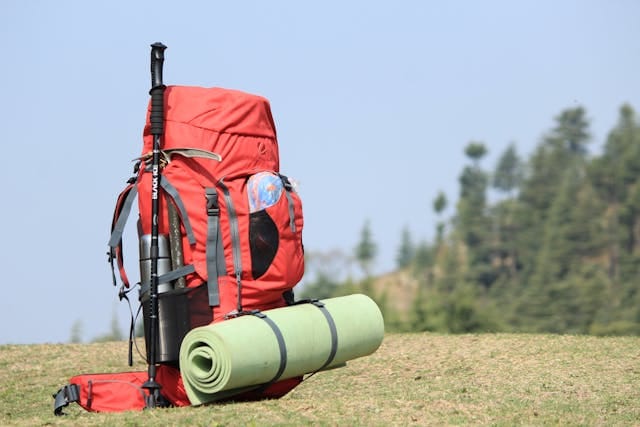
Best Bushcraft Backpack: Gear Up for the Wild Without the Fluff
What Makes a Bushcraft Backpack “Best”? When you’re out in the wild, your backpack isn’t just a bag – it’s your lifeline. So, what separates…
-

Best Portable Wood Stove: Compact Options That Actually Work in the Wild
Why You Need a Portable Wood Stove in the Wild When you’re out in the wild, a portable wood stove isn’t just a luxury—it’s a…
-

Best Knife for Bushcraft: Tough Blades That Can Handle the Wild
What Makes a Knife Good for Bushcraft? A bushcraft knife isn’t just any knife—it’s a tool you’ll rely on for almost everything when you’re out…
-
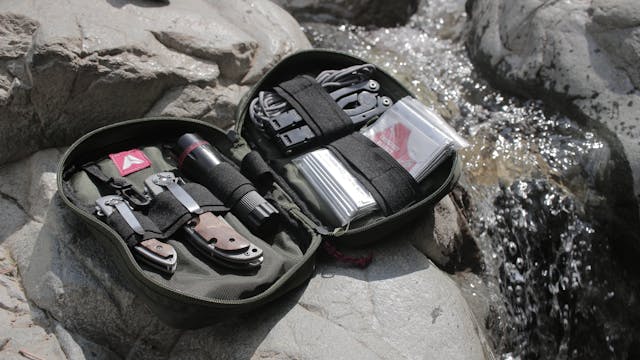
Best Bushcraft Tools: Gear You Actually Need for the Wild
Why You Need the Right Bushcraft Tools Bushcraft isn’t about carrying every tool under the sun. It’s about knowing which gear is worth the weight…
-

Best Bushcraft Saw: Cut Through Wood Without Cutting Corners
Why a Good Bushcraft Saw Beats an Axe for Some Jobs? A lot of people think an axe is the go-to tool for everything in…
-
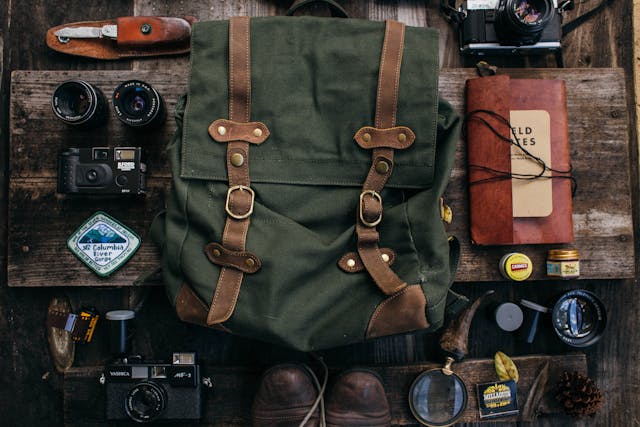
Best Bushcraft Gear – Don’t Buy Unnecessary Stuff
Best Bushcraft Gear: My Top Selections for Wilderness Success When I prepare for a bushcraft expedition, selecting the right gear is paramount. Each piece serves…

